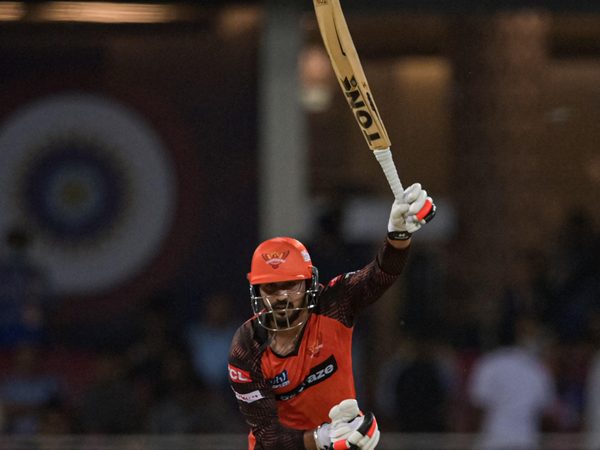
Time stood still for Deepti Sharma and a billion Indians on Sunday at Christchurch. And when it ticked along, it resulted in heartbreak – heartbreak that had first surfaced in 2017 and reached shattering proportions in 2022.
Back in 2017, when the Indian women’s cricket team reached the summit clash of the Women’s World Cup, it was looked like the watershed moment they could build upon. Their experienced stars (Jhulan Goswami and Mithali Raj) had plenty of cricket left in them, and youngsters such as Deepti Sharma and Smriti Mandhana were making a splash. Harmanpreet Kaur, who fell somewhere between those timelines, was already a world-class cricketer.
Three years later at the Women’s T20 World Cup in Australia, it felt as if everything was going according to plan. India had, for the first time in a while, been fearless on the global stage and were reaping the rewards. But then, like most of the world, the Indian women’s team suffered due to the COVID-19 pandemic.
Hardly any cricket took place and by the time they returned to the field in March 2021, they were unrecognisable from the side that had made waves in international cricket. The extravagance was suddenly missing. The refreshing risk-taking gave way to cautious calculations. And more importantly, victories against top-quality teams dried up, with each defeat having a familiar pattern.
Even prior to the 2022 ICC Women’s World Cup, the signs had been ominous. India gave Australia a scare on their tour Down Under at the turn of the year but were unable to win that series. They also lost to England (in England), while South Africa humbled them (in India) 4-1. The most damning indictment, though, was the series against New Zealand just before the tournament. All they managed was a victory in the final ODI – that too when the White Ferns were chopping and changing. A drubbing on the eve of the tournament.
So when they arrived at the ICC event, there were sceptical glances around the highest ceiling they could achieve. In Harmanpreet, Smriti and the eccentric Shafali Verma, they had more than enough firepower. The bigger question, however, was if they were willing to take that gamble.
At times during the tournament, they didn’t let that extra scrutiny affect them. Against the West Indies in particular, India flexed their batting muscles and shed the inhibition that had become an unwanted trait. But when the best teams in the competition came calling, they just weren’t brave enough to continue in that fashion – much like it was when they played Australia, England, New Zealand and South Africa in bilateral contests.
On ability, there is absolutely nothing to separate these teams. Australia are the strongest of the lot but there is very little to choose between the others. If anything, India have more talent at their disposal than the likes of England, New Zealand and South Africa. Yet, they chose to keep it under wraps rather than unleash it.
The Women In Blue played seven games at the Women’s World Cup and only won thrice. All of them, by the way, came when they batted first. Prior to the tournament, they hadn’t won an ODI in which they batted first since November 2019.
That, though, is also where the catch lies. India might have got sucked into a false sense of security, feeling that totals in the 220-260 range were good enough to churn out victories. Against middling batting units, it works a charm. But when confronted by Australia, England, New Zealand and South Africa, India have almost always been left ruing their lack of belligerence.
The T20 game, as it has done in men’s cricket, has permeated the women’s sport too. The inception of numerous franchise leagues has meant that top-notch players have developed a habit of batting at a higher tempo. For context, the three highest run-chases ever in women’s World Cup cricket have come in this year’s tournamen.t
Even with the ball, India were a lot more conservative than their counterparts. Spin was never expected to play a massive role in New Zealand. Yet, a few teams (most notably England) have managed to use spin as an attacking weapon in recent weeks.
India, however, tried to only curb the run-flow with their spinners. It led to success against the lower-ranked teams but against Australia and South Africa – sides stacked with batters, the lack of middle over wickets only made their respective run-chases easier. Hence, it seems that the Indian women’s team will have to spend countless hours introspecting what went wrong, And, of course, understand how they can correct it moving forward.
The counter argument to all this is that it all came down to a no ball and that a semi-final berth was decided by a matter of millimetres.
That, though, couldn’t have been further from the truth. India, despite their talent, never really looked capable of making the impact their squad warranted. They had three of the world’s best batters (Harmanpreet, Mithali and Smriti) and the brightest young talent on the planet (Shafali). Yet, they almost always found themselves longing for something extra. And, conveniently forgot that the solution could have easily come from within.
This isn’t quite shocking an exit as the England men’s team had at the 2015 World Cup. After that, they completely revolutionised their style of play. But it is quite similar.
For a while, those watching India’s games closely have known that a revamp was needed. And the Women In Blue would do well to take that advice on board. In the end, it came down to time stopping, a dropped catch, a no ball and moments of angst and despair. It shouldn’t have been this way, though. India should have comfortably cruised through – swatting aside most challenges kept in front of them. They didn’t this time. But by reinvigorating what has slowly become an outdated approach, they could ensure that history doesn’t repeat itself.








